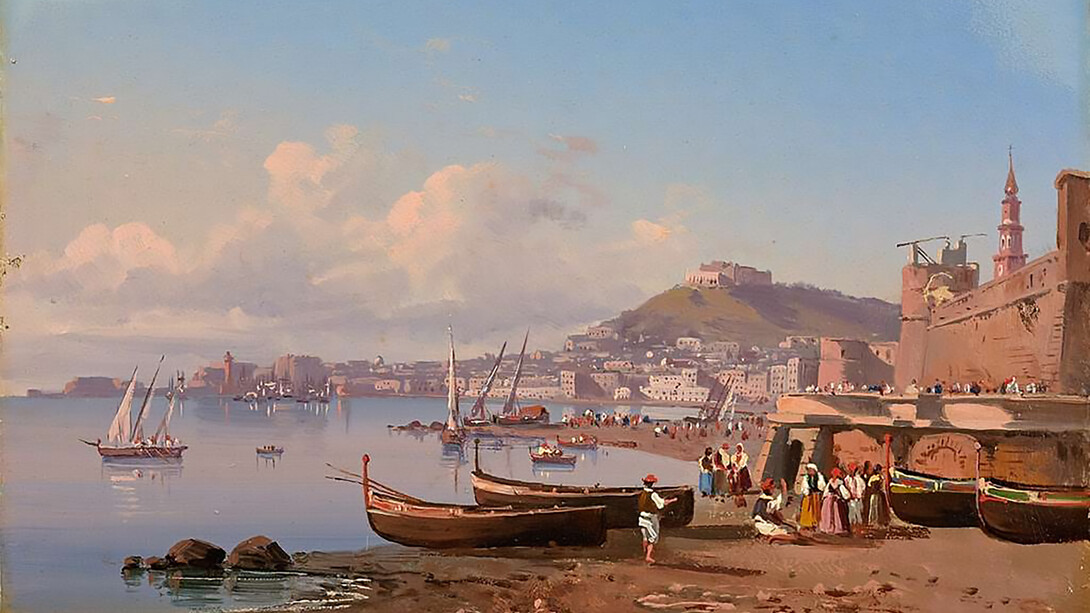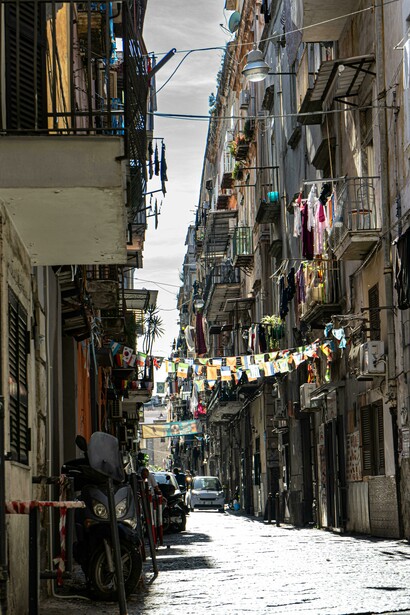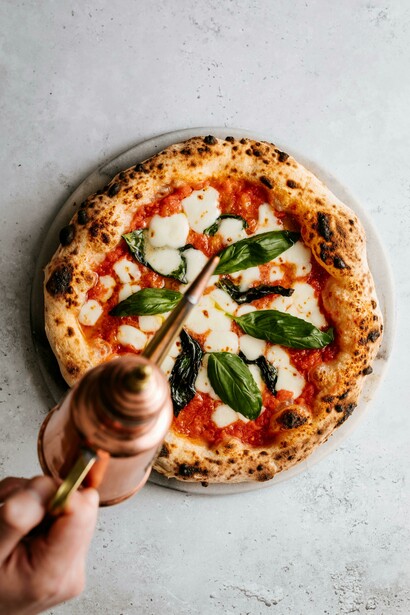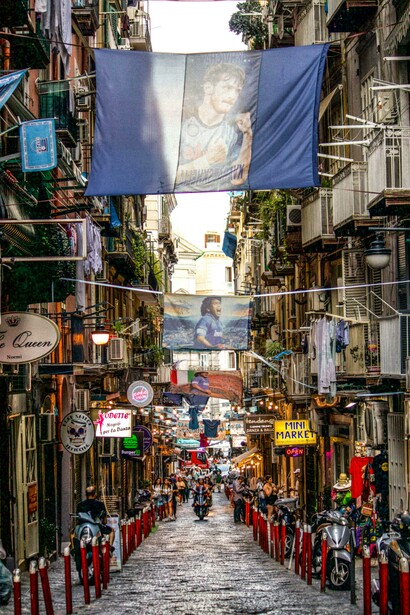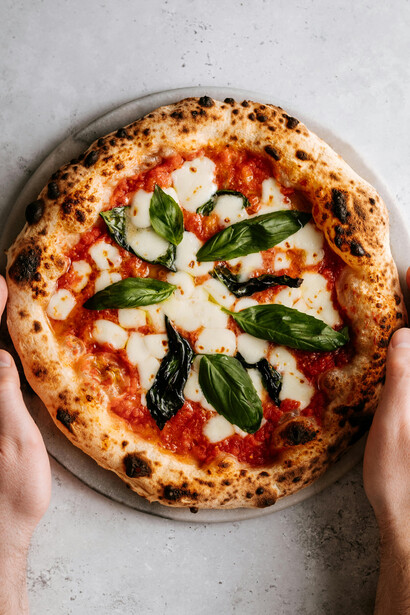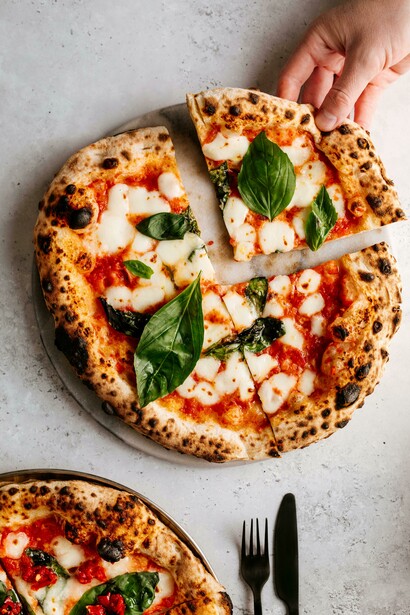Ahh yes, Napoli, Italy, the holy land of pizza.
I cannot lie; my first week living in Italy was a trial by fire—or, well, in my case, by cold pizza. Unlike most, it wasn't divine inception in the first bite; it was more like a missionary preaching a chilly gospel, asking me to believe in a miracle I wasn't quite ready for.
Unfortunately, I was already on the fence about pomodoro, a spiritual impurity in the holy land, and to make it worse, the shared pizza on my first night was left out long enough to go stone cold, so there I was holding a soggy slice of what was supposed to be my moment of nirvana.
The rest of the week was a delightful combination of Nutella and bread. It's kind of a form of gluttony if I am being honest.
Then one evening, I tried something different off the menu: a quattro formaggi, a marriage of four ooey-gooey cheeses. That was the moment I ascended. I saw the true divine, and I could hear angels plucking harps, and golden light shone down upon me. I was finally in pizza heaven.
It was in that moment of revelation—the joy, the bliss--- that marked the start of my pizza pilgrimage. I was now not only discovering the sacred ritual of eating pizza but also Napoli itself: the body and blood of what pizza truly is.
Before the existence of the body and blood we worship today, there was only the Roman focaccia and the humble Neolithic flatbreads. Then, sometime in the 1600s, came the strange travelers from the West, bearing gifts—chief among them, the ripe red fruit: Pomodoro. But it wasn't until the 18th century that the people of Napoli declared, "Let there be pizza," and thus, on the first day of creation, it was made. It was considered fuel to power the ones who provide the labor.
The first church of the Holy Pizza, "Antica Pizzeria Port'Alba," opened its doors to the faithful in the 1830s, right here in Napoli, Italy, and it still stands today. But its roots run deeper: established in 1738, it was where "i venditori" would frequent to gather the sacred pizzas like the "Pizza Marinara," "Pizza con alici," "Pizza Margherita" (not called so at the time), and so on, before spreading the gospel across the city of Napoli.
The Holy Grail, Pizza Margherita, appeared in the holy texts in the year of our crust 1889. It was then that Her Royal Highness, Queen Margherita of Savoy, graced the holy land with her presence. Raffaele Esposito, the chosen pizzaiolo, presented unto the Royal Holiness a trinity of pizzas. Blessed was the one covered in the flesh of pomodoro, mozzarella, and basil, the colors reflecting the sacred tricolore of Italia. And from that day forth, the relic was named the Pizza Margherita.
And from the streets of Napoli rose the holy Pizzaioli, the saints of the Sacred Oven. For they are the makers and guardians of this centuries-old ritual, sworn to a holy craft.
To protect the word and sanctity of the Pizza of the Holy Land, the scripture Associazione Verace Pizza Napoletana (AVPN) was written and founded in the year of our crust, 1984. The scripture preached that the dough be hand-kneaded, not rolled; that the dough only consist of flour, water, salt, and natural yeast, for it had to be laid to rest and rise with divine patience, and then it shall be baptized in the holy fire of the wood-burning oven at a temperature of no less than 485 degrees Celsius.
It was in 2009 that the pizza, the blood, and the body of the Holy Land were bestowed sanctity as a Protected Geographical Status (PSG) from the greater land of the EU, and then in 2017 it was bestowed once again, this time as "Art of Neapolitan Pizzaiuolo" with the sanctity of being inscribed on UNESCO's Intangible Cultural Heritage list. It is through this sacred bestowment that the holiness of the Pizzaiuoli was recognized as the cultural guardians of the holy land.
To be coronated as one of the Holy Saints of the Pizzaioli, one must participate in a series of rituals and trials. Like all great pizzaioli before them, the pizzaiolo standing forth must go through training and wisdom-seeking, specifically on the choosing of the flour, the perfect swirl of the fresh pomodoro, and the resting of the holy dough. It is only once they have endured these trials that they may receive a holy parchment, the Certification, from the great heavens (or, well, in this case, the AVPN) and be bestowed with the honor of being the Holy Saint Pizzaiolo, who may now spread the true gospels of Pizza Napoletana.
And so these holy ones carry the faith, belief, and sanctity of the blood and body of the Holy Land, laboring not for the vanity or the riches but for the glory of the Holy Crust.
The Holy Fire still burns hot in the ovens of the modern-day Holy Land. To this day, the faithful gather in the pews of the pizza temples, whether it be the ancient temple of the Antica Pizzeria Port'Alba or Starita, which was adorned with a star by the heavenly angel Michelin.
These sacred grounds are no longer just for the ritual of eating pizza but also for meeting, gathering, and sharing joy and belief with fellow men.
It is in these hallowed grounds that I have witnessed miracles.
I once found myself in a chapel with a German disciple. It was after a long day of pilgrimage that we finally sat down to feast upon the Holy Pizza. He was a man who, beyond ravenous reason, performed an act of divine desperation and chaos. His eyes landed on a forgotten basket of bread left untouched on an altar beside us, and he claimed it for himself.
With the sheer greatness of a prophet and the complete lack of vanity, I watched as he indulged in the ritual of eating the Holy Pizza, with a side of fresh bread. Yes, bread with bread. A gluttonous (glutinous wink) sin, no less. I witnessed true sacrilege, yet his devotion was pure and divine. You see, in the pews of the Holy Land, all are welcome, even the occasional heretics.
Then there was a convert from the West, a disciple who, upon receiving the Holy Communion in the form of the Holy Pizza fritta, ascended into heaven on the first bite. It was in that moment of her bliss that I realized how sinful the joy of eating the Holy Pizza truly is, and yet it remains the only true path to divine enlightenment in the Holy Land.
We spoke very little after. These are the experiences that are too sacred to be put into words.
It was in these moments of holy reverence that I finally realized, as absurd as the depth of devotion for pizza may seem, these are the truest scriptures of pure human emotion and joy. The "Holy Pizza" has the true power of bringing humans together; it has the magic of leaving you with memories full of nostalgia, and it's the image of watching a friend experience that moment of pure ecstasy and happiness. This is exactly why pizza is a religion, why this devotion runs so deep, and why food, even in its simplest form, can bring us closest to the divine.
"Nel nome del Pizzaiolo, del Pomodoro e dello Spirito Mozzarella. Saluti."
